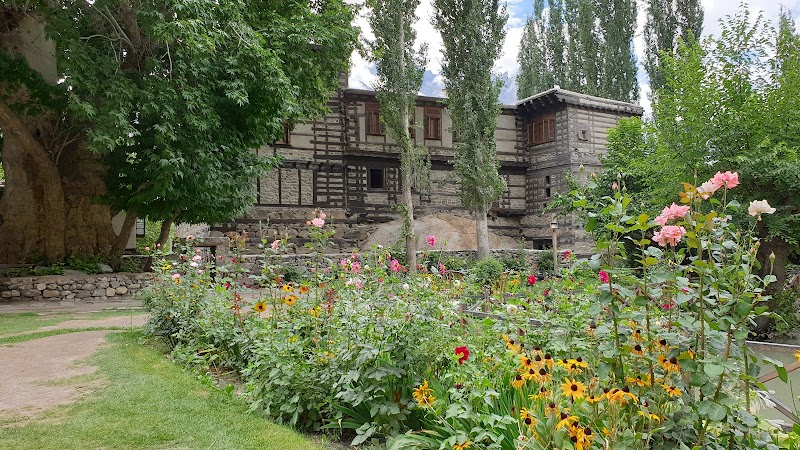Trekking to Concordia: Stand Among Four Giants in Gilgit-Baltistan’s Wild Heart
Trekking to Concordia brings you face-to-face with four of the world’s tallest peaks in the wild expanse of Gilgit-Baltistan. Experience challenging glacier trails, dynamic landscapes, and unforgettable mountain vistas on a trek that demands respect and rewards with grandeur beyond compare.
Hydrate Like Your Summit Depends on It
High-altitude dry air accelerates dehydration — carry at least 3 liters of water daily and use purification tablets or a filter to replenish safely from streams.
Choose Rugged, Waterproof Footwear
The trail’s mix of glacial moraine, rocky paths, and occasional stream crossings demands boots with solid ankle support and reliable grip.
Pace Yourself to Fight Altitude Fatigue
Allow time for acclimatization—avoid rushing segments; incremental elevation gains can prevent altitude sickness.
Pack for Variable Weather
Mountain weather shifts quickly; bring a waterproof jacket, insulating layers, and a warm hat to stay protected from sudden cold or wind.
Trekking to Concordia: Stand Among Four Giants in Gilgit-Baltistan’s Wild Heart
The trek to Concordia in Skardu, Gilgit-Baltistan, is a demanding yet extraordinarily rewarding journey into the high-altitude realm where four of the world’s tallest mountains boldly claim the skyline. At the confluence of the Baltoro and Godwin-Austen glaciers, Concordia offers an unrivaled panorama of K2 (8,611m), Broad Peak (8,047m), Gasherbrum I (8,080m), and Gasherbrum II (8,035m). This trek pulls you through rugged terrain marked by ancient glaciers that seem to pulse with life, whispering stories of centuries past.
Starting from Skardu (altitude 2,228m), the expedition covers roughly 90 kilometers one-way, with an elevation gain of about 2,500 meters, compelling every step into a physical and mental dialogue with the fierce landscape. The path fluctuates through shaded pine forests hugging the Indus River in the first days, gradually yielding to rocky moraines and ice-sculpted valleys that dare you onward. Each day presents changing textures: the river croons and pushes forward, glaciers grind quietly underfoot, and winds challenge your resolve as you ascend higher.
Practical planning is essential here. Hydration is a constant battle as the dry mountain air depletes water stores faster than expected, so carrying and purifying at least 3 liters daily is non-negotiable. Footwear must be sturdy, waterproof, and broken in before embarkation—rocky, uneven paths punish unprepared feet. The ideal trekking window spans late June through early September, when daylight lengthens and snow retreats from critical passageways.
Camping at Concordia under a galaxy of stars with those towering summits overhead defines a rare kind of solitude, where nature is fiercely itself—untamed, immense, and humbling. The air thins, and your breath syncs with the rhythm of the peaks, tuning you into a world pared down to essentials: altitude, endurance, and awe.
This trek isn’t for the faint-hearted, but the payoff is a front-row seat to some of Earth’s most dramatic elevations and landscapes. Preparation, respect for the environment, and measured pacing are your allies in unlocking the grandeur of Concordia and the mighty peaks that surround it.
Nearby Trips
All Adventures
Boat Charters
Water Activities
Adventures near Skardu
Discover the unique and memorable adventures that make Skardu special.
Frequently Asked Questions
What is the best time to start the Concordia trek?
The ideal trekking window is from late June to early September, when the trails are mostly snow-free and weather is relatively stable.
Do I need a guide to complete the trek?
Local regulations often require registered guides or porters, and their knowledge significantly improves safety, navigation, and cultural interactions.
How physically demanding is the trek?
It is challenging with sustained elevation gain and high altitude; good physical conditioning, proper acclimatization, and pacing are essential.
What wildlife might I encounter on the trek?
Watch for ibex navigating cliff edges, Himalayan marmots scurrying among rocks, and various alpine bird species that inhabit this region.
Are there accommodation options en route?
Tents are the primary accommodation along the trek with some basic tea houses in early segments; travelers should be prepared for camping conditions.
How do I prepare for altitude sickness?
Ascend gradually, stay hydrated, avoid alcohol, and know symptoms like headache, nausea, and dizziness. Consult a physician before your trip regarding medication.
Recommended Gear
Sturdy Waterproof Hiking Boots
Protect your feet from rocky and wet terrain, reduce ankle strain, and keep comfortable over long days.
Water Purification System
Essential for safely hydrating from natural water sources along the trek.
Layered Clothing System
Adjust to temperature shifts by layering with moisture-wicking base layers, insulating mid-layers, and waterproof shells.
Trekking Poles
Help maintain balance on uneven glacier moraines and ease joint stress during steep ascents and descents.
Local Insights
Hidden Gems
- "The lesser-frequented viewpoint at 'Urdok Glacier' offers solitude and sharp views of Gasherbrum II without the usual crowd."
- "A small prayer rock site near Base Camp where locals leave stones for safe passage."
Wildlife
- "Markhor goats, Himalayan ibex, marmots, snow partridges"
History
"Concordia has been a critical route for mountaineers since the early 20th century expeditions to K2 and remains culturally significant as a meeting point of local Balti traditions."

